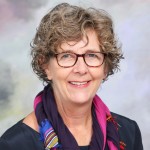This article illustrates differentiated instruction and assessment for a PYP exhibition.
Differentiated instruction has happened in classrooms long before the term became popular. Wormelli, 2006, defines this type of instruction as ‘doing what’s fair for students’.
In Tomlison’s, A Model for Differentiation, 2010, it is described as, ‘a teacher’s response to learners needs.’
Rather than focus on why differentiation is essential to effective professional practice, or what it looks like in daily classes, I have chosen to narrow the focus to differentiated instruction and assessment for a PYP exhibition. After reflecting on last year’s exhibition I proposed that we widen our differentiation. What follows are initial plans and strategies that we can consider to better meet the learning needs of all students.
I will briefly describe how our team could respond to learners to facilitate differentiation. The team includes classroom teachers, specialist teachers supported by our PYP coordinator and parents. With the team committing to active support for differentiation, the result will be improved outcomes for all. Teachers have an opportunity to further develop their professional practice and students will benefit.
Context: More than forty nationalities are represented. Our students, who are highly geographically mobile, have different levels of English from beginners to proficient. Our inclusive model of education caters for students who are high performing, or have learning disabilities and disorders, or difficulties with executive functioning.
Implications: We need to plan for differentiated learning journeys modifying content, process and product/ assessment. We need to consider readiness, interests and learning styles. (Tomlinson 1999)
Expected outcomes: Students will present their findings in displays and interact with the school community when they come to talk about the displays during the exhibition.
Alignment: The outcome informs learning opportunities. So now we need to consider specifically what learning opportunities need to be created for our students to achieve this outcome. How can students demonstrate the research skills, as detailed in the section on transdisciplinary skills, in Making the PYP happen? How could we create opportunities for all our students with diverse learning needs to demonstrate their learning? How do we assess what each student knows and can do?
What can differentiation for exhibition look like? Responses include:
Product/assessment
- Differentiated outcomes and expectations regarding the volume of work and level of skill, e.g. describe / analyse. These outcomes will be aligned with the differentiated guides for making judgments – checklists, rubrics – The actual layout of the checklist, colours and landscape orientation, ideally has a similar look for all.
- Present in own language or bilingual – very successful last year.
- Develop questions for interaction, in mother tongue and English, then print on different coloured paper. Each bilingual answer is printed on the corresponding coloured paper.
- Use photographs of the students who have developmental delays to document their learning journey. This also supports reflection and discussion with parents.
Content – be consistent with expected outcomes
- Simple or advanced lines of inquiry. Different number of lines of inquiry
- Rewording of the central idea so that word selection and sentence construction is more meaningful for those with developmental delays.
Process – be consistent with expected outcomes
- Differentiated sources – The English Language Support team has rewritten information with a lower Lexile count and organized the information so that students can readily retrieve it. We also used images, data displays and graphic organizers rather than more words as sources of information and also for representing students’ understandings.
- Develop pertinent questions related to the information. Students can then write answers using words from the questions to help structure the sentences.
- Encourage parents to support students by discussing the central idea and lines of inquiry at home in mother tongue.
- Explicit teaching and modelling of research skills, e.g. note creating in the months prior to exhibition. This can be done within units of inquiry.
The alignment of expected outcomes, (product), assessment and what the students have the opportunity to learn (content and process) is fundamental to effective differentiation. We expect these examples of differentiation to build success not only in terms of achievement, but also self-esteem, confidence and the pride parents will have in their children. We are aiming to achieve the desired outcomes for each of our students by responding to the individual learners’ needs.
—
Melinda is an experienced educator having worked in a range of educational contexts. She has special interest in curriculum development and assessment. With an additional responsibility for students with Special Education Needs she is passionate about differentiation.

